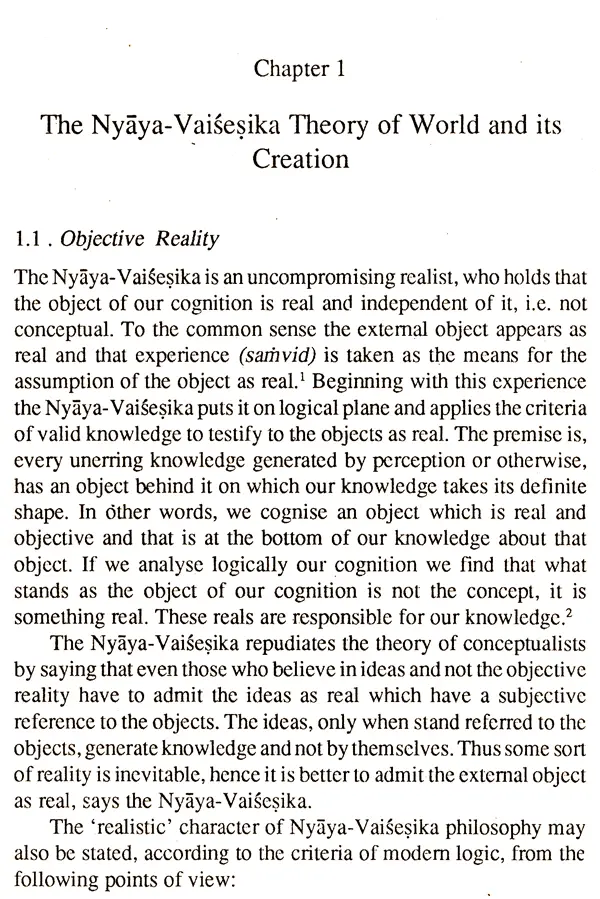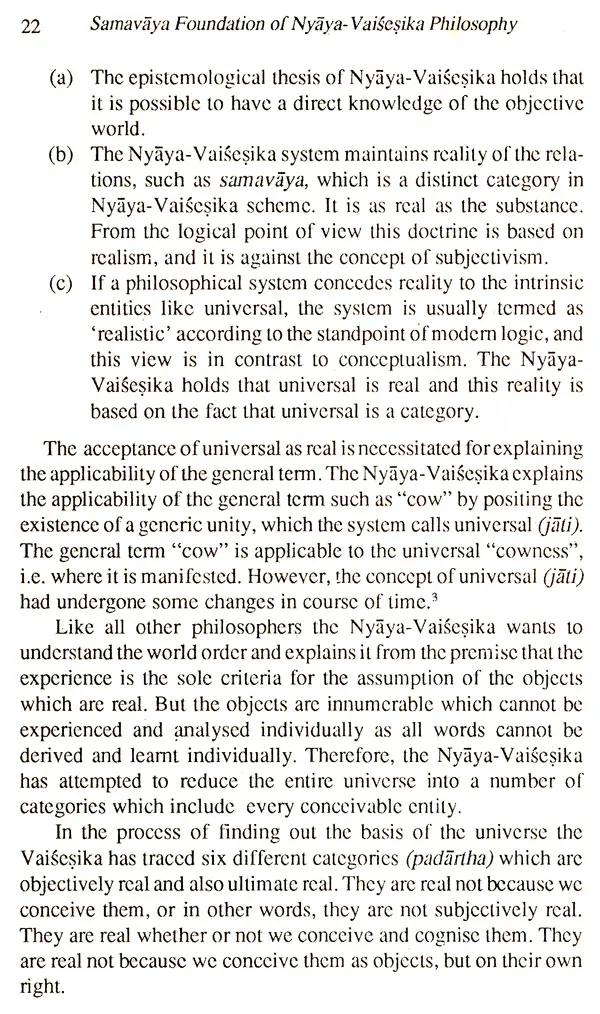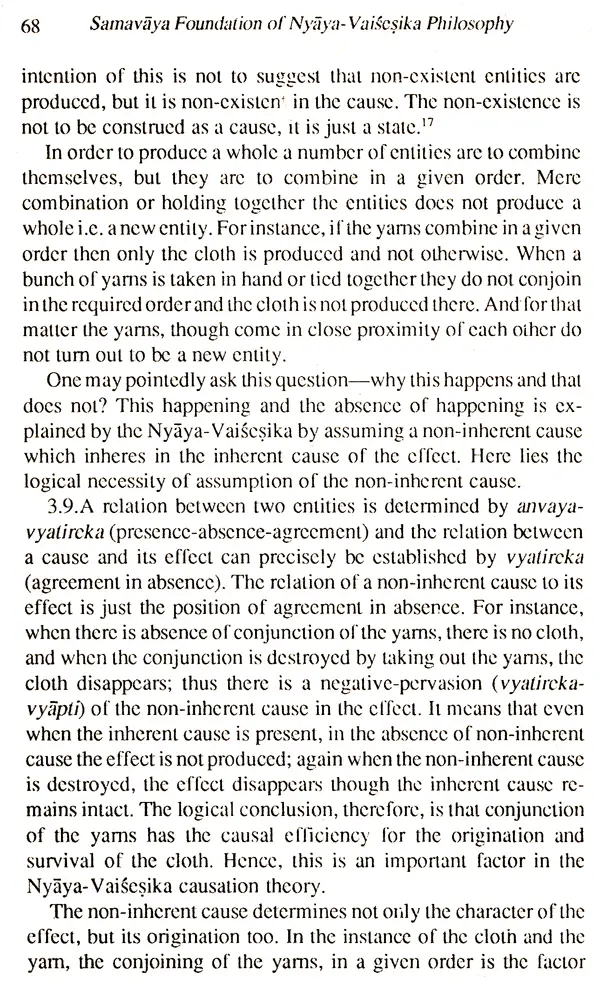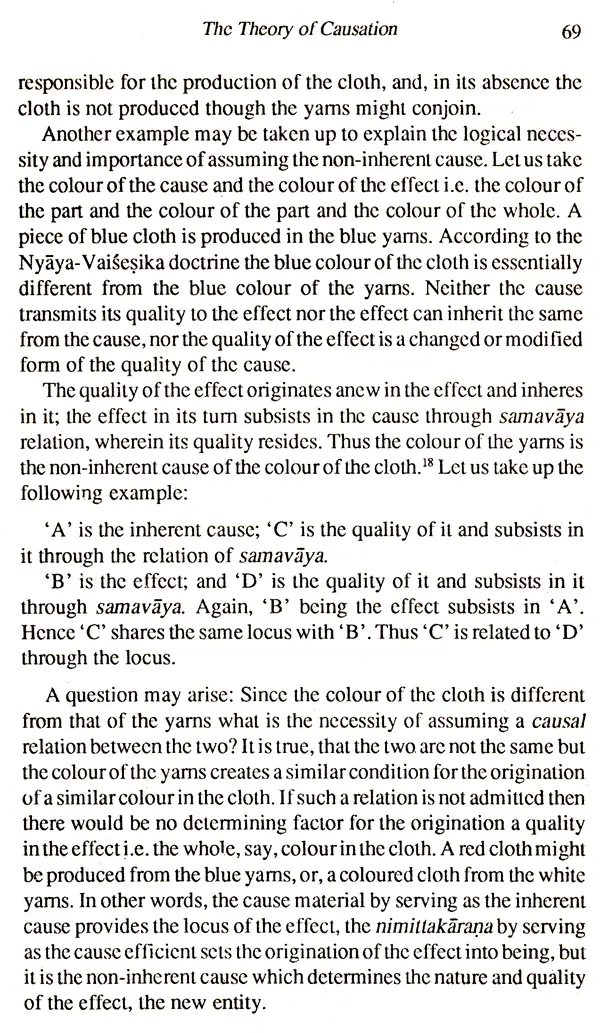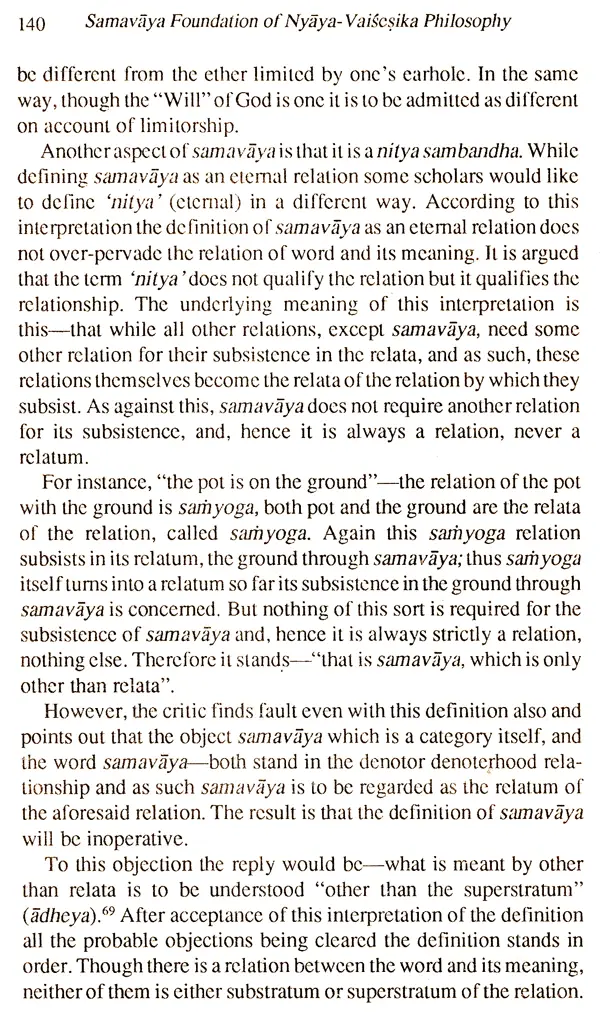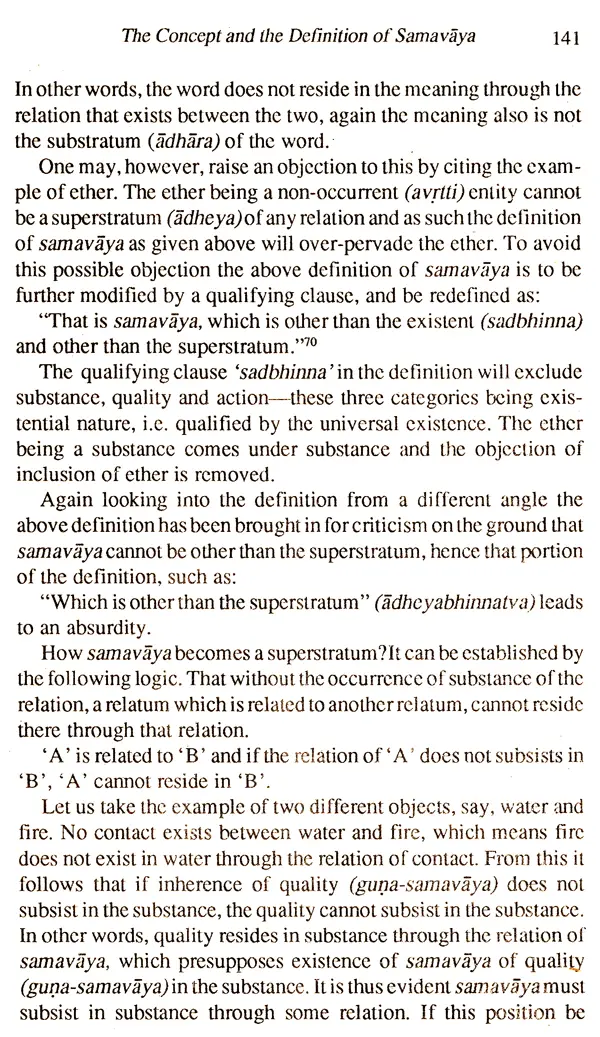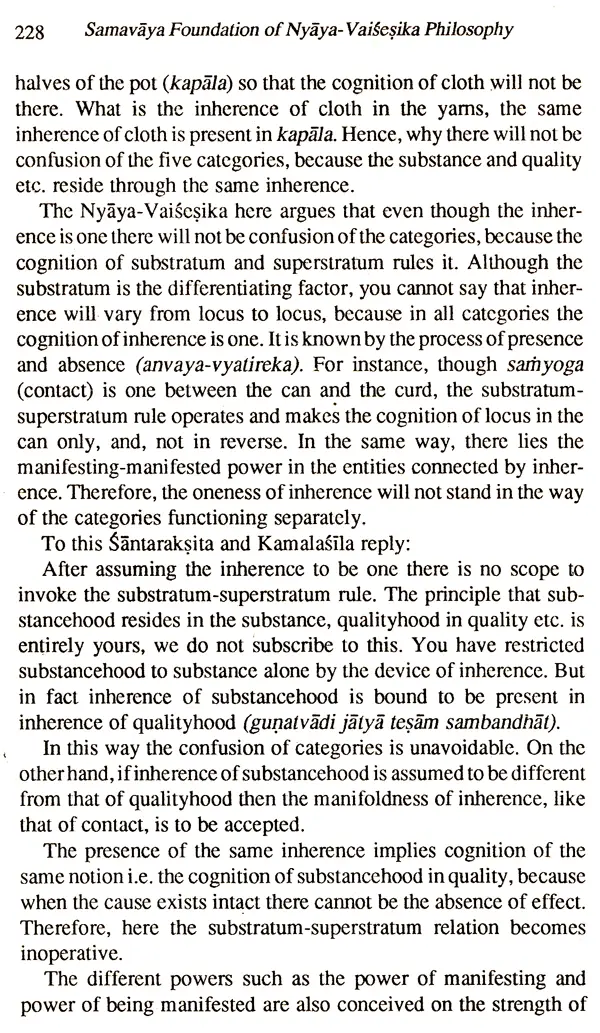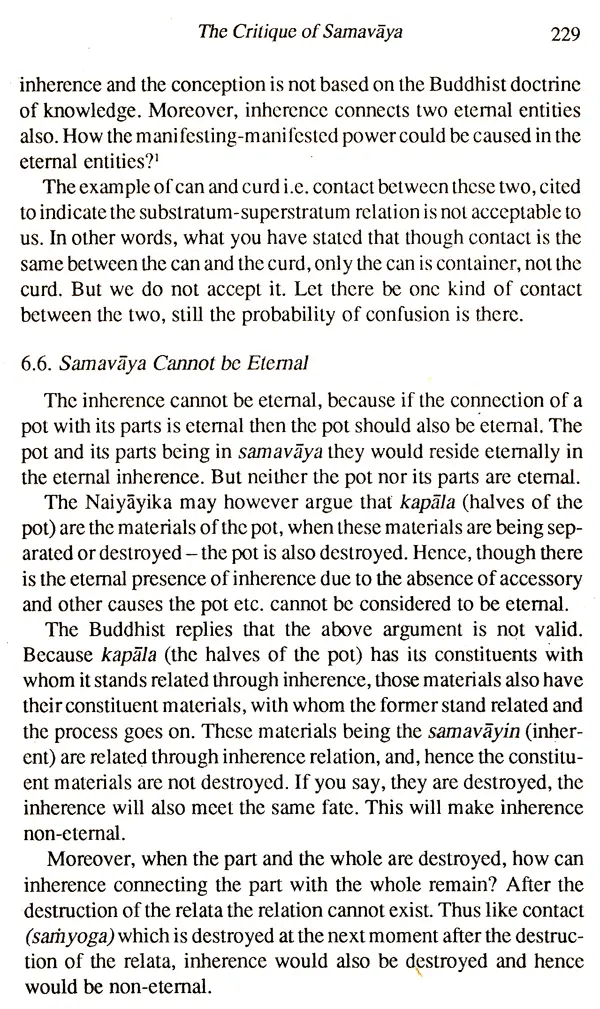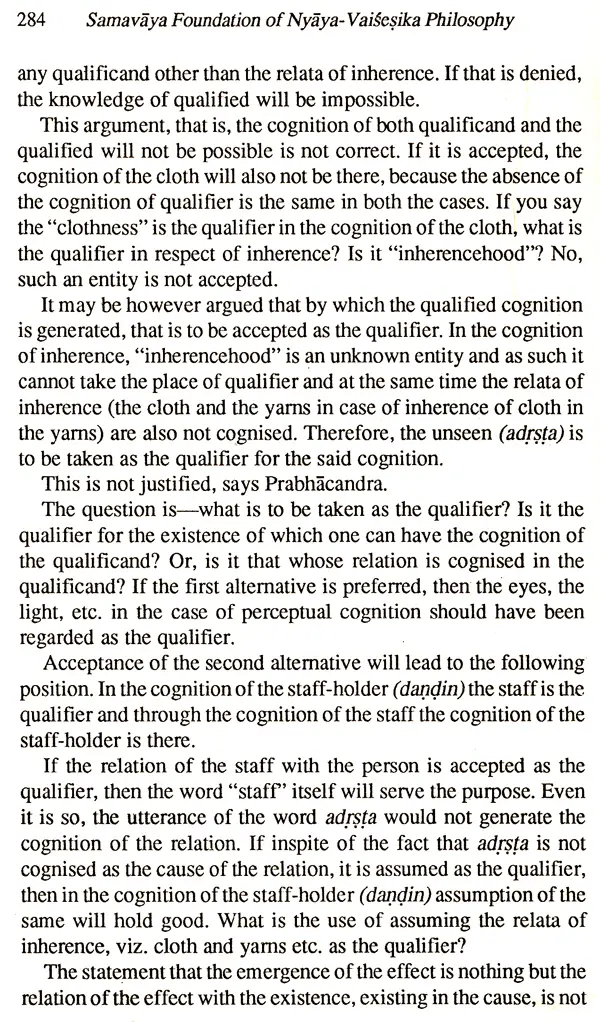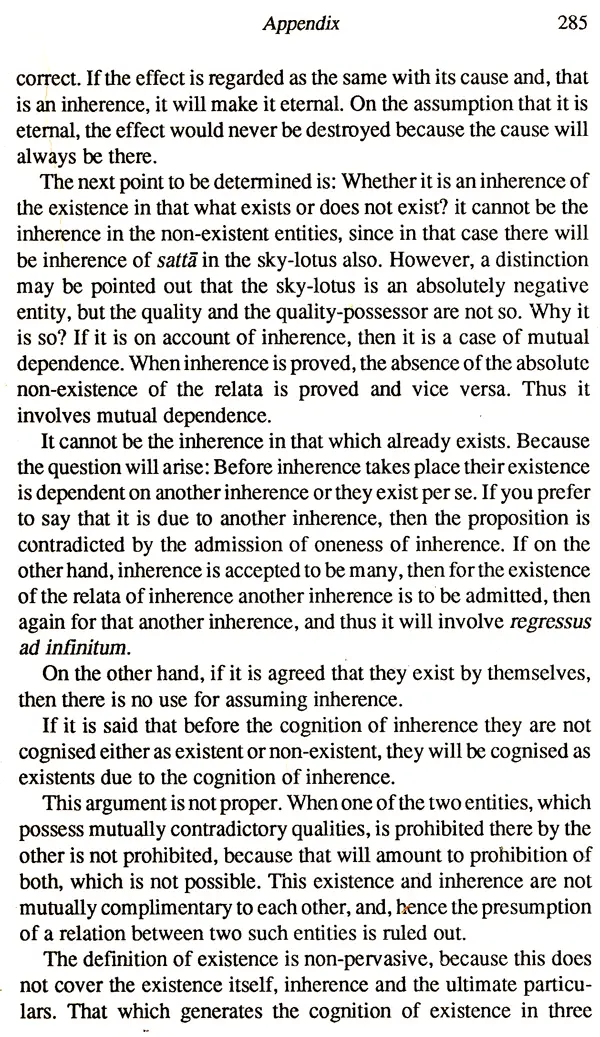
Samavaya Foundation of Nyaya-Vaisesika Philosophy
Book Specification
| Item Code: | UAG277 |
| Author: | Biswanarayan Shastri |
| Publisher: | Sharada Publishing House, Delhi |
| Language: | English |
| Edition: | 1993 |
| ISBN: | 8185616167 |
| Pages: | 309 |
| Cover: | HARDCOVER |
| Other Details | 9.00 X 6.00 inch |
| Weight | 490 gm |
Book Description
Samavaya is one of the six categories, i.e. the sixth category in the Vaiseșikasūtra and the Prasastapäda-bhāṣya. Later on abhāva (absence) is added to these six.The Vaiseșika system developed independently side by side with the Nyāya system of Philosophy. Both Nyaya and Vaiseșika being realist and with causality as the basic theory, came to be regarded as one system, in course of time. The commentators and particularly the authors of the prakaraṇa granthas treated them as one.
The Nyaya system has accepted the seven categories of Vaiseșika though the Nyāya-sūtra enumerated sixteen categories, different from that of the Kanāda-sutra. In fact, the sixteen categories of Nyaya are quite different in concept of categories of Vaiseșika. The Vaiseșika traces the evolution of the physical world to the six categories, which are considered as ultimate reality. Therefore, the pluralist and realist Naiyāyika has got to accept the Vaiseșika categories. The Vaiseșika theory of emergence of the gross elements in, or from the subtle element, anu or atom is based on samavāya. Without the instrumentality of savavaya combination of subtle and unperceptible anus cannot be explained. According to Vaiseṣika system the gross physical entity emerges through the combination of subtle atoms and acquires dimension and perceptibility when atoms are combined in the given process through samavāya. Thus for explaining logically the evolution of the world order the role of samvāya in Nyaya-Vaiseṣika philosophy is om nipotent and overpervading, without which the system cannot stand. It is why samavāya is termed as the corner stone of this system of philosophy; while some other describes the function of samavaya 'the magic of samavaya'. Even if it is 'a magic' that is to be investigated.
The Indian Philosophical Thoughts: Origin and Development of Nyāya-Vaišeşika
The Indian philosophical thoughts may broadly be divided into two categories the astika (theist) and nastika (atheist). Usually those who accept the authority of the Vedas and consider the Vedas as infallible are called astikas and those who reject the authority of the Vedas are termed as nästikas.¹
However, we find the following distinct schools of Indian philosophical thoughts-the materialistic philosophy, tradition ally ascribed to Carvaka, also known as Carvaka darśana; the phi losophy of the Jainas and the Philosophy of the Bauddhas; and the six systems of philosophy, commonly termed as the Brāhmanical philosophy by the European scholars. These six systems are also clubbed as Nyaya-Vaiseṣika (N-V), Samkhya-Yoga (S-Y), and Mimāṁsā-Vedanta (M-V) or Pūrvottara-Mimāṁsā. Leaving the case of materialistic philosophy all other systems may be divided as idealist and realist, monistic and pluralistic, according to the basic concepts about the origin of the universe and the ultimate reality.
**Contents and Sample Pages**

